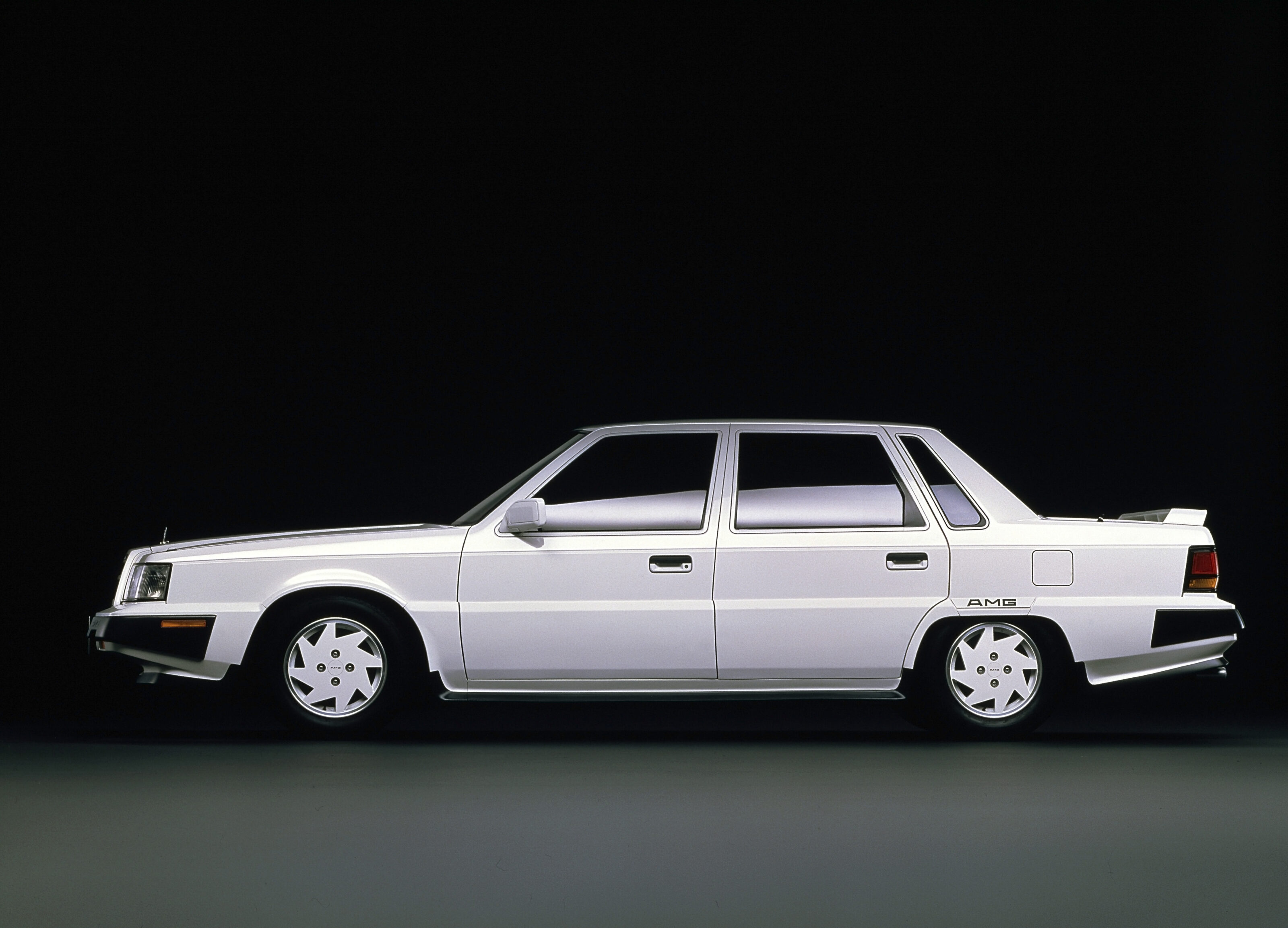When you think AMG, a Mitsubishi or Honda doesn’t naturally come to mind. But, at the same time the German tuning house was cranking up the volume on Mercedes-Benz in the late ‘80s and early ’90s, it decided to dip its toes in the Japanese (and technically, South African) market. The end result was three equally bizarre creations.
How did this happen? Well, AMG hasn’t always been wholly owned by Mercedes-Benz. That process started in 1999 with Daimler-Chrysler AG taking a controlling interest before Mercedes bought the tuning arm outright in 2005.

Kicking off this trio is the Mitsubishi Galant AMG – based off the sixth-generation four-door sedan with production running from 1989 to 1991. Around 500 were produced for the Japanese domestic market only and it offers a very different flavour to the rally-inspired VR-4.
For a start, the Galant AMG is front-wheel drive – not all-wheel drive – and uses a naturally aspirated version of the venerable 4G63 engine. AMG tweaked the 2.0-litre unit with reinforced internals, high-flow exhaust, more aggressive camshafts and new pistons.
It revs to 8000rpm, has a five-speed manual gearbox, and weighs just 1250kg, which makes it sound far tastier than the figures of 125kW and 191Nm would suggest.
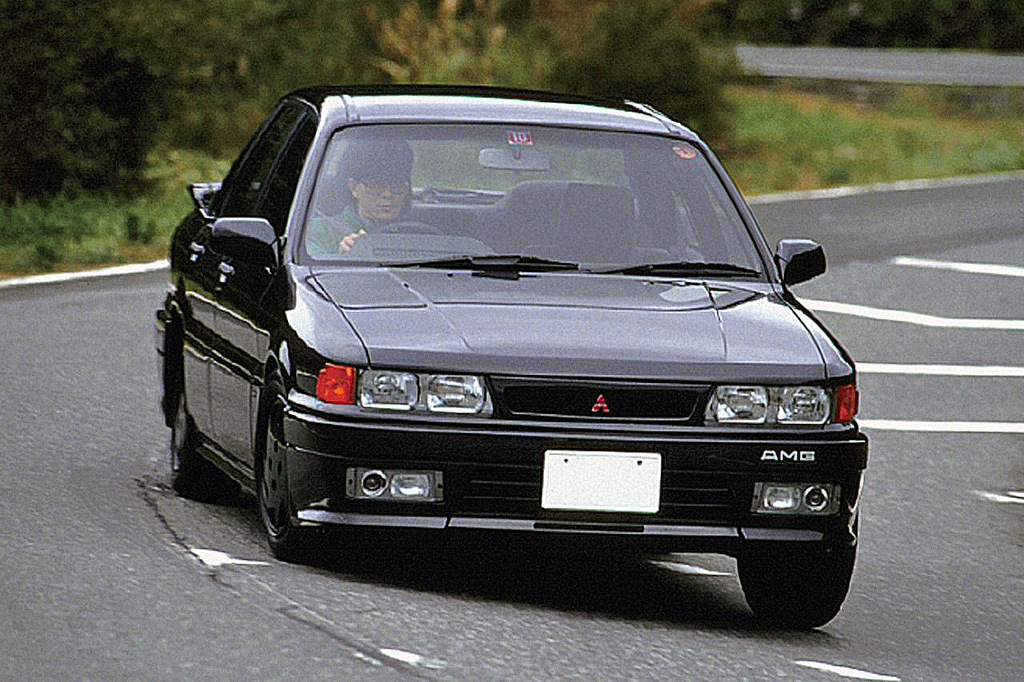
Yet, for an atmo four-pot of the late ’80s, that’s not exactly shabby either. Especially when you consider its power-to-weight ratio of 100kW/tonne. Yes, it is 26kW/103Nm down on the VR-4 but reports reference it as an engaging drive.
Aesthetically the German-fettled Galant scores 15-inch alloys (a minor update offered a different design), a body kit as well as the AMG badging – which stands for Aufrecht, Melcher and Großaspach if you were curious.
On the inside there’s an AMG steering wheel, wood shift knob and trim as well as leather upholstery for an added level of luxury.
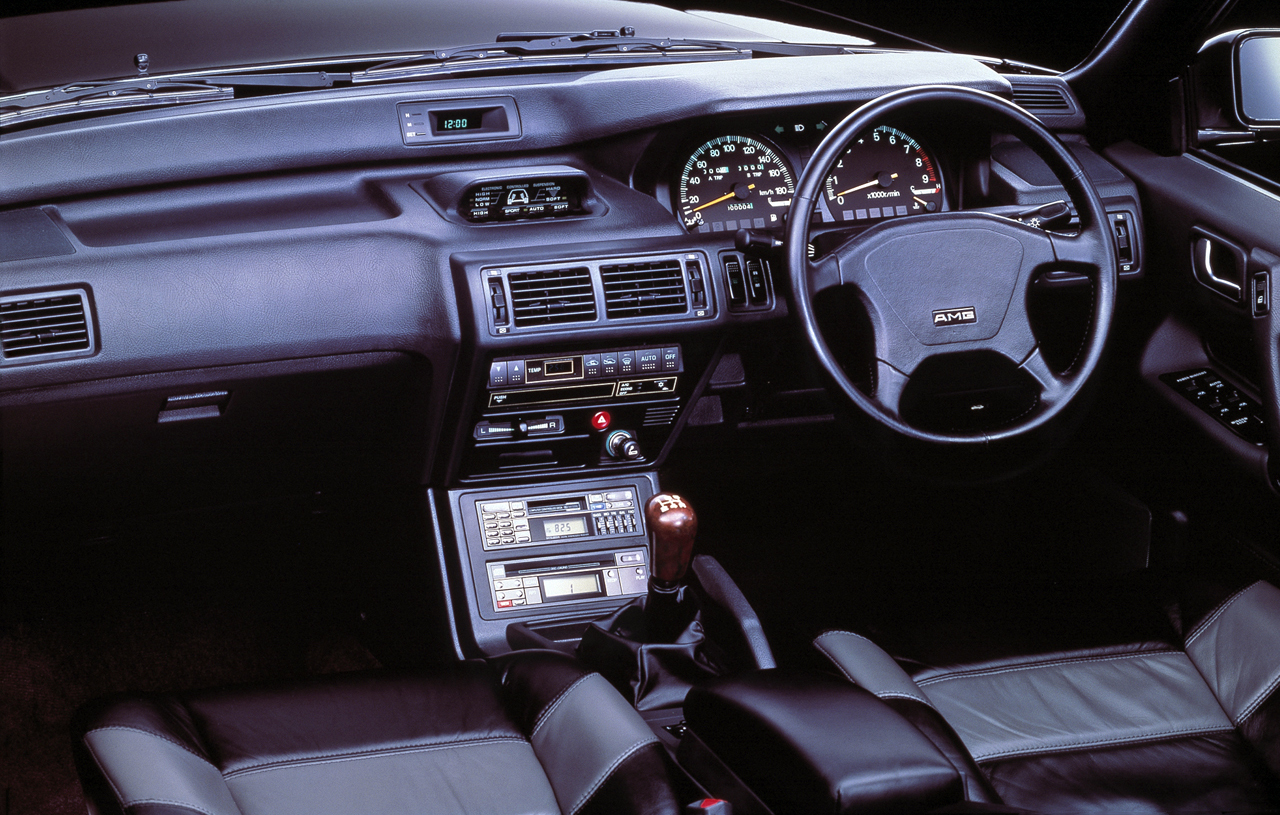
However, if luxe is what you’re after then you might be pleased to know that the Galant is one of two Mitsubishis bestowed with the honour of an AMG badge. Admittedly, the original “tuned by AMG” Mitsubishi is a little more lacklustre – and harder to look at.
Enter the 1987 Mitsubishi Debonair V3000 Royal AMG. And to think of it as a hotted-up version of the existing car is to give it too much praise. Performance gains for the large front-wheel-drive sedan wasn’t the goal here; luxury was.
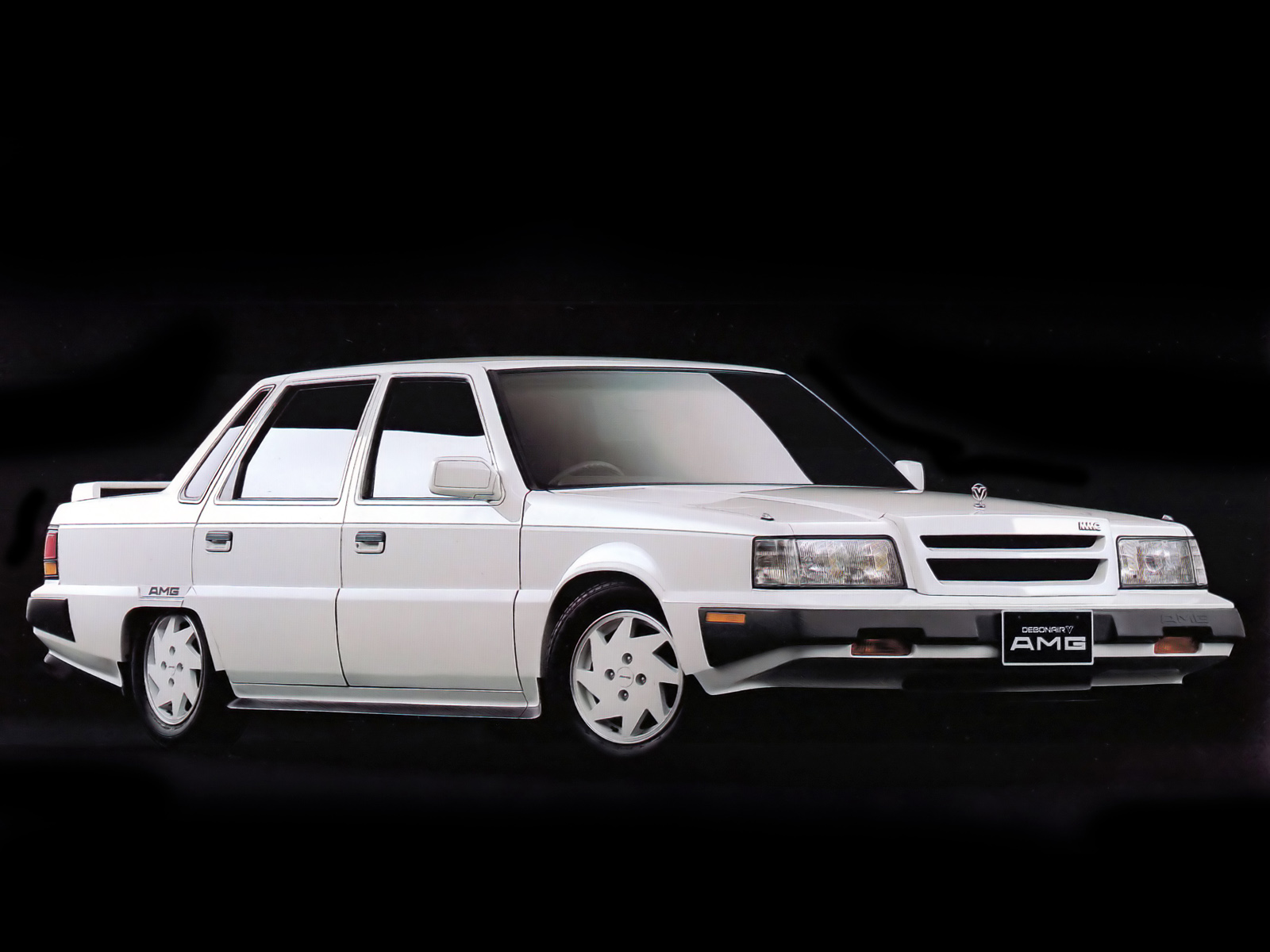
Therefore the 3.0-litre V6 produces no extra power, but it did gain an AMG steering wheel, body kit, wheels and the all-important badging. Inside the seats look more like plush recliners. Later in the four-year production cycle a long-wheelbase version launched for extra rear legroom.
Mitsubishi’s alliance with AMG is a by-product of the booming late ’80s and ’90s JDM scene where companies were willing to splash the cash. After all, this is the era where Toyota launched Lexus, Nissan released Infiniti and Mazda tried Eunos. So maybe MMC (Mitsubishi Motors Corportation) thought it was onto a winner at the time.
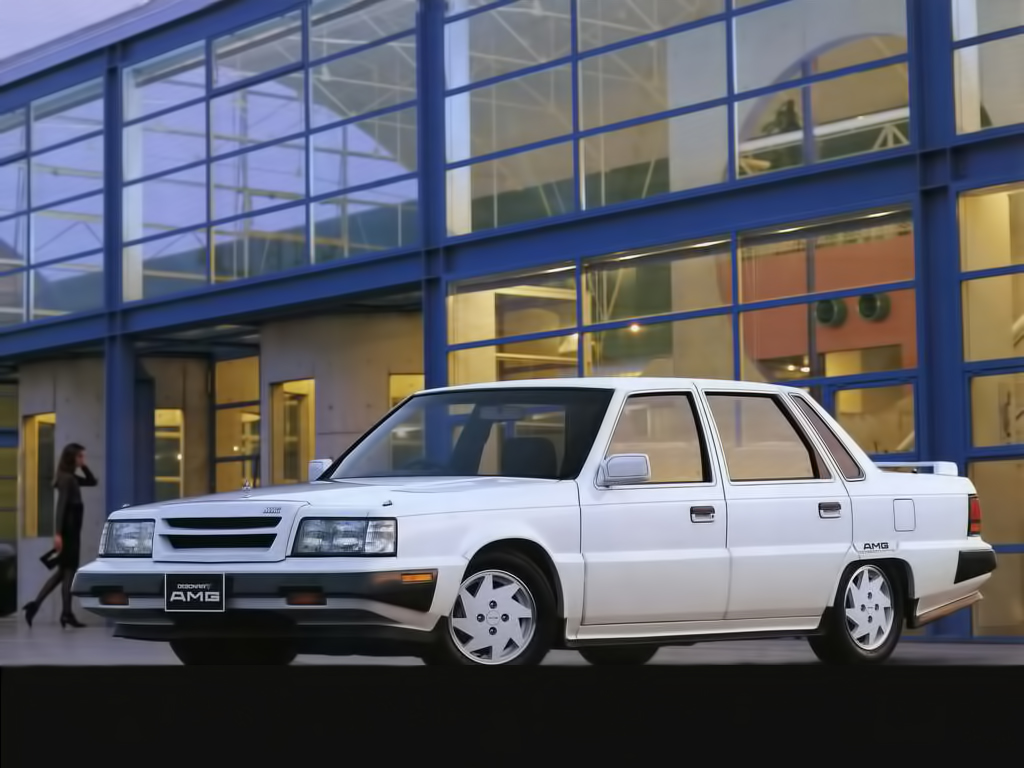
Although there is a third way. South Africa has a habit of one-off specials for its own market. And this Honda/AMG mash-up must be one of the rarest. Enter the Honda Ballade AMG (known Down Under as the Civic).
It’s a weird manufacture tie-up which started with Honda wanting to sell cars to the South African market and Mercedes-Benz having the means. This partnership ended in 2001, but not before and AMG badge was slapped on a Honda in the ’90s.
Sold as either a 160i or 180i, the AMG Ballade four-door sedans used versions of the B16 and B18 Honda engines with lowered Eibach suspension. Cosmetic enhancements were limited to either 15- or 16-inch wheels and a boot spoiler. Details are scarce and it’s not known how many were produced.
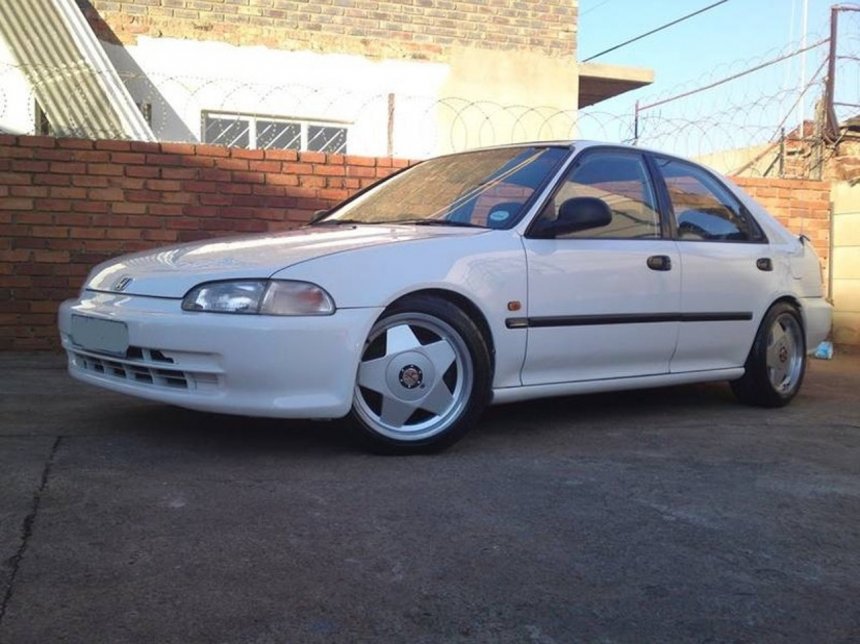
While there is a plethora of accomplished Mercedes-AMG products from the A-Class to the G Wagen, we can’t help but wonder what other creations AMG might have been able to come up with if it still had brand freedom.
What would you like to see gain the AMG touch?

We recommend
-
 Features
FeaturesThe five items you need to survive your first track day
Eyeing your first track day? Here are the things you need to get the most out of the experience
-
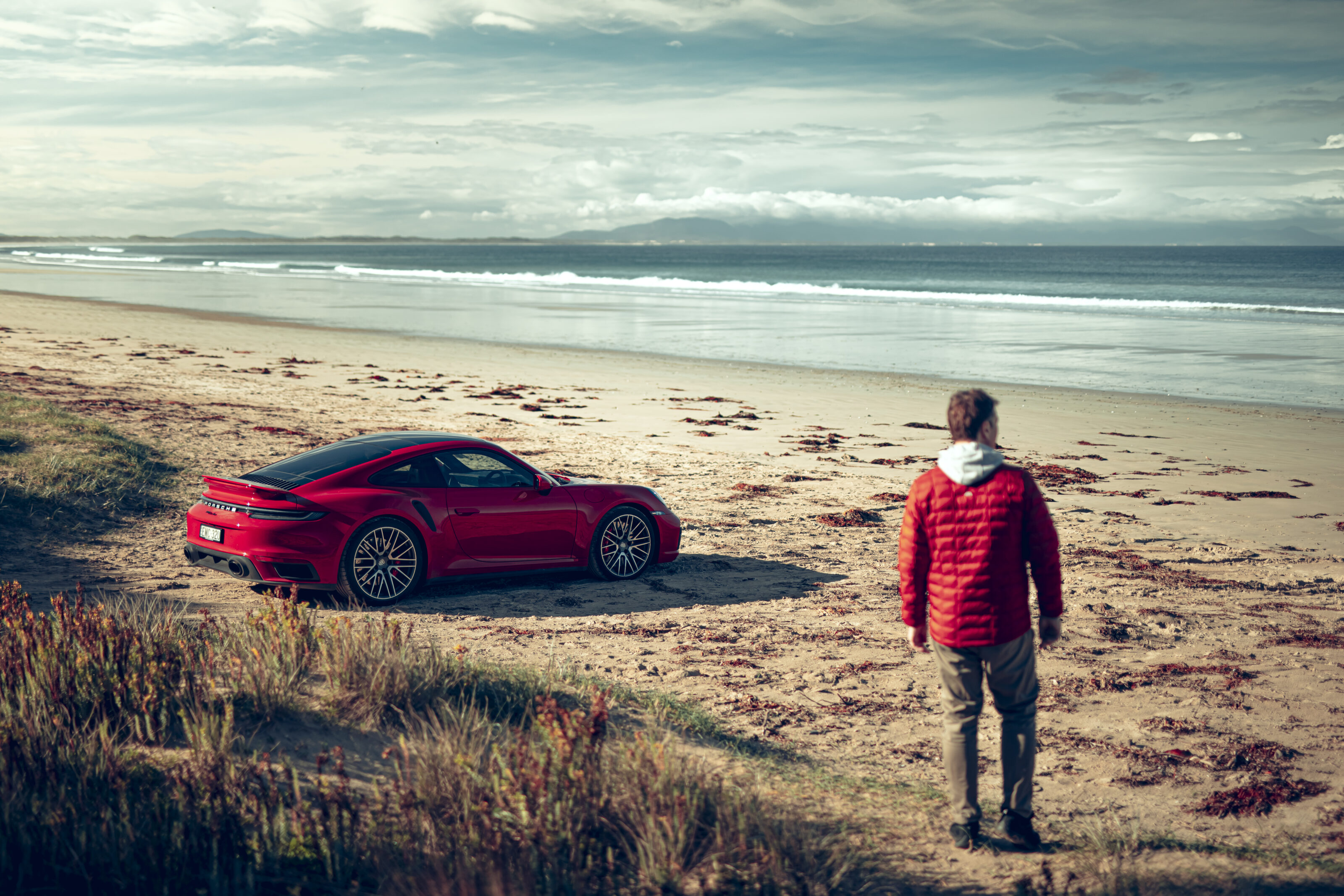 Features
FeaturesHow to become a motoring journalist
MOTOR's editor on what you'll need to succeed in landing a job as a motoring writer
-
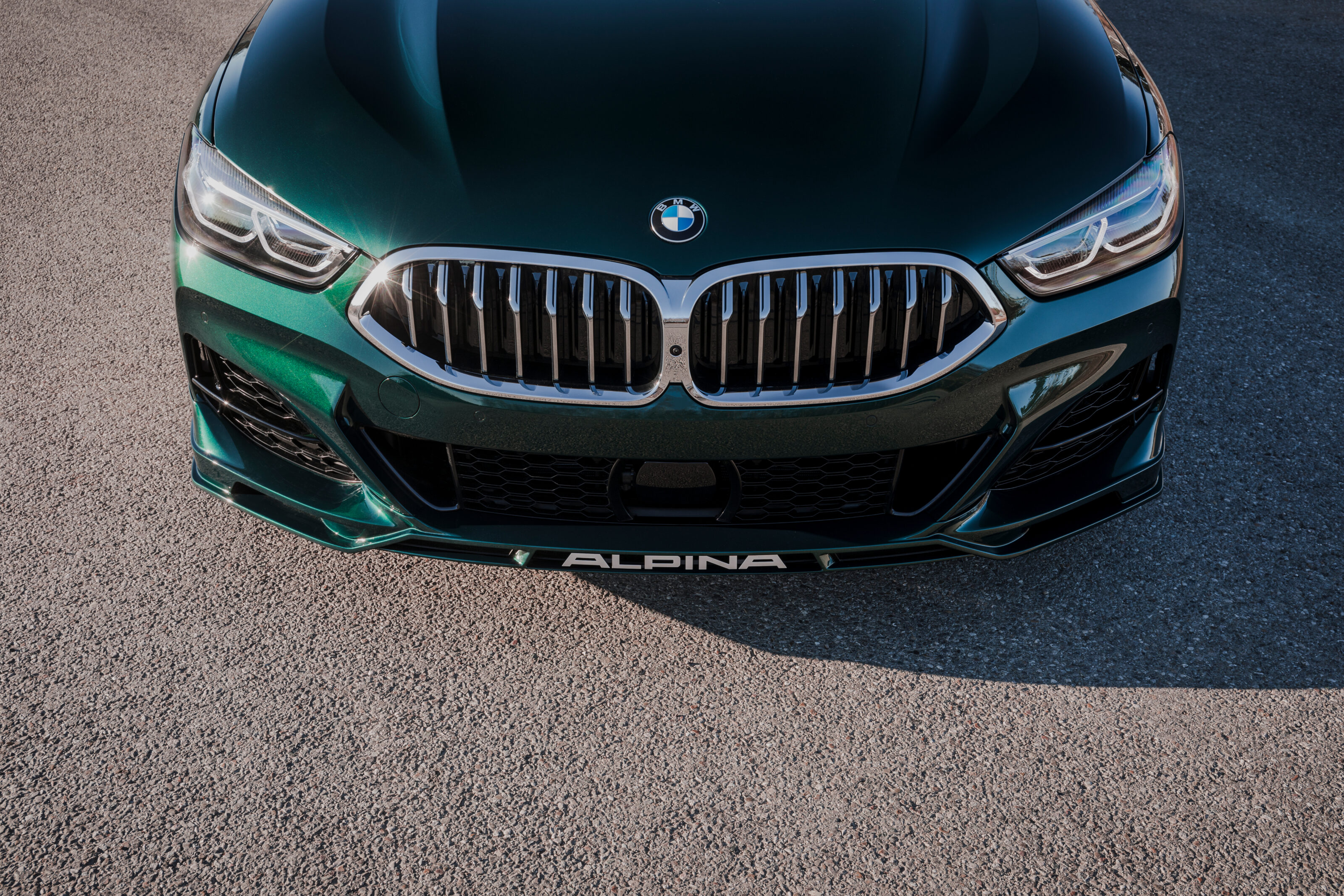 Features
FeaturesWhat the future holds for Alpina
We sit down with Andreas Bovensiepen to find out his take on the future of the industry and Alpina


